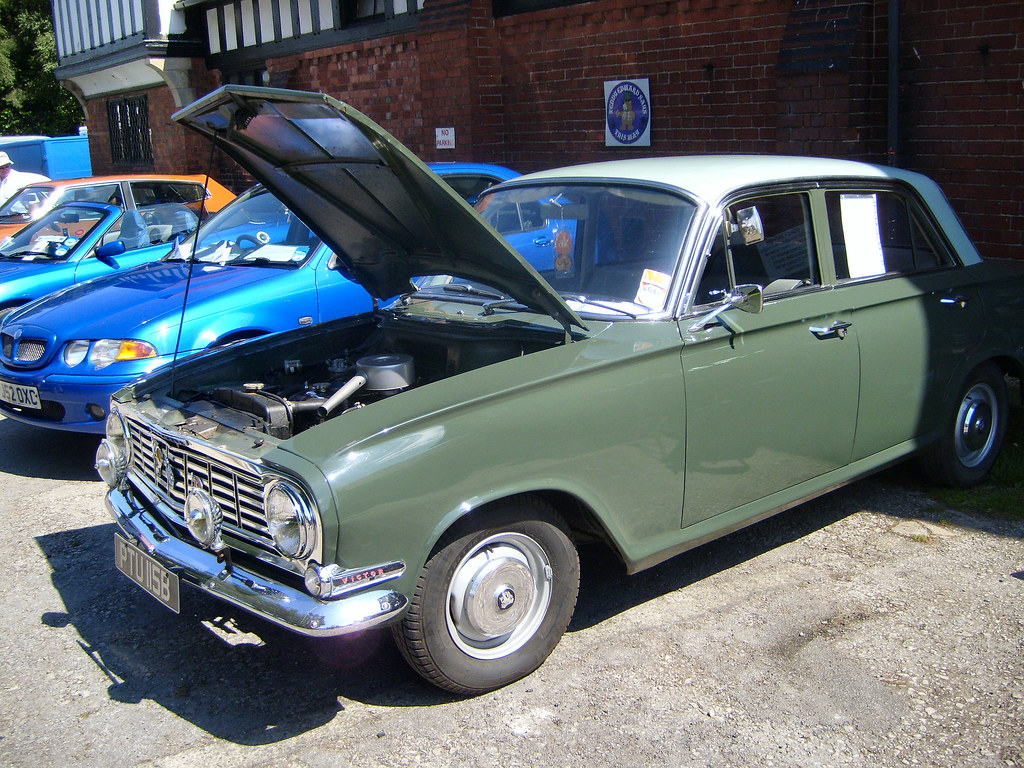
The automotive world is often a stage dominated by the loudest and proudest, where iconic names like Mustangs, Corvettes, and 911s relentlessly steal the spotlight. While these celebrated machines earn their place, their pervasive presence sometimes overshadows legitimate innovators whose brilliance deserves far greater recognition. These are the forgotten gems, machines that pushed boundaries and set new standards without the usual fanfare.
These overlooked marvels are more than curiosities; they are testaments to audacious design and ingenious engineering that profoundly influenced subsequent automotive development. Many commanded premium prices when new, appealing to discerning enthusiasts. Today, collectors are rediscovering their exceptional value, distinctive character, and unique connection to automotive history.
In this deep dive, we’ll shine a spotlight on some of the most underrated cars—true innovators whose stories are captivating. From quirky microcars delivering thrills to luxury sedans defying trends, prepare to encounter a lineup of vehicles that quietly, yet powerfully, shaped the course of driving. These unsung heroes of the asphalt are ready for their moment.
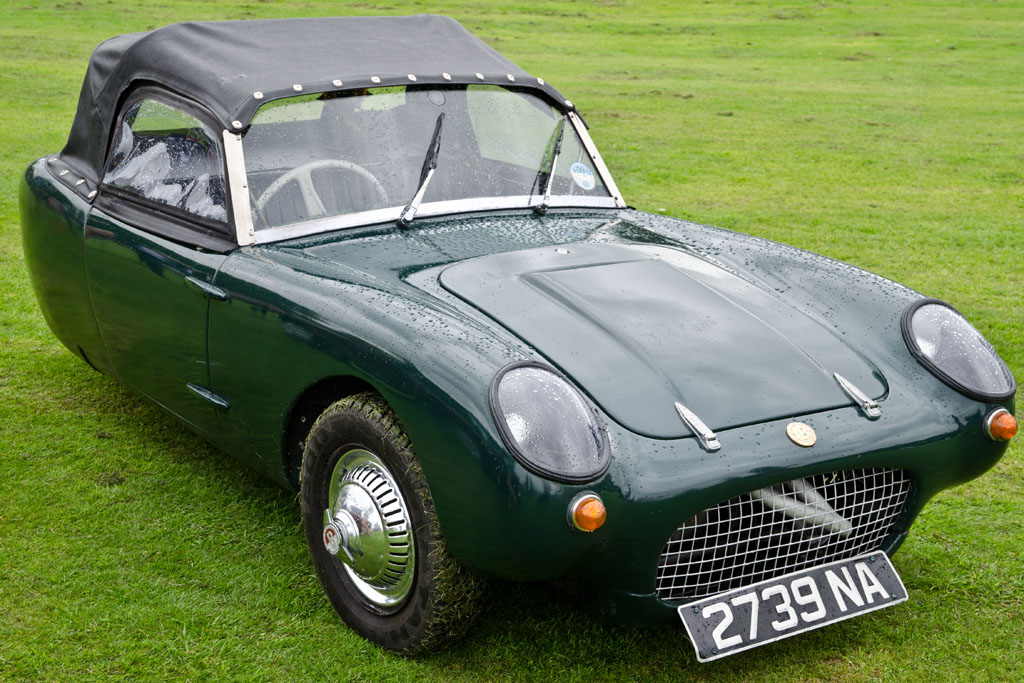
1. **Berkeley T60: Britain’s Motorcycle-Powered Oddity**The Berkeley T60 stands as a remarkable testament to innovative thinking, proving budget limitations could be overcome to deliver sports car thrills. Priced at approximately $500 in 1959, its lightweight fiberglass construction was pioneering, enabling exceptional efficiency and a dynamic feel that belied its tiny dimensions. This commitment to lightness also concealed sophisticated engineering, maximizing performance from its motorcycle-derived powerplant.
Its aerodynamic shapes prioritized efficiency over conventional aesthetics, creating a distinctive look. Powering this nimble machine were Excelsior Talisman two-stroke engines, delivering surprising performance. With a total vehicle weight between a mere 680 and 725 pounds, these small engines enabled impressive acceleration, making every drive an adventure. It truly embodied ingenious economy meeting spirited performance.
Inside the Berkeley T60, a minimalist cockpit focused on driving purity. Essential controls were thoughtfully positioned within easy reach, and simplified instrumentation provided only necessary information. The rigorous pursuit of weight savings influenced every design decision, underscoring Berkeley’s pioneering role in grassroots engineering innovation. Surviving examples attract collectors appreciating its blend of efficiency, character, and historical footprint.
Read more about: The Gears of Time: Unearthing 14 Criminally Underrated Rides That Deserve Their Moment in the Sun

2. **Jowett Jupiter: Post-War Innovation When Britain Needed Hope**During post-war Britain’s rebuilding, the Jowett Jupiter emerged as a beacon of engineering ingenuity. Dr. Robert Eberan von Eberhorst masterminded its advanced aluminum construction over a tubular steel chassis. This structural brilliance formed the foundation for a lightweight, robust vehicle. Its clean, aerodynamic lines were crucial for optimal weight distribution, vital for competitive performance on track.
Beneath its sleek aluminum shell, the Jupiter housed a 1,486cc flat-4 engine, producing 60-63 horsepower. Despite modest figures, its power translated into impressive track performance due to lightweight design and aerodynamic efficiency. The Jupiter’s sporting credentials were established through class wins at Le Mans in 1950, 1951, and 1952, cementing its reputation internationally.
The Jupiter’s cockpit balanced driver comfort with sporting demands. Comprehensive instrumentation included engine monitoring, providing crucial feedback. Adjustable seating accommodated various driver sizes, enhancing usability, while practical storage solutions highlighted real-world attention. With only 50% of 899 Jupiters surviving, preservation examples are particularly valuable, commanding up to $58,000 from international collectors appreciating its Le Mans heritage.
Read more about: The Gears of Time: Unearthing 14 Criminally Underrated Rides That Deserve Their Moment in the Sun
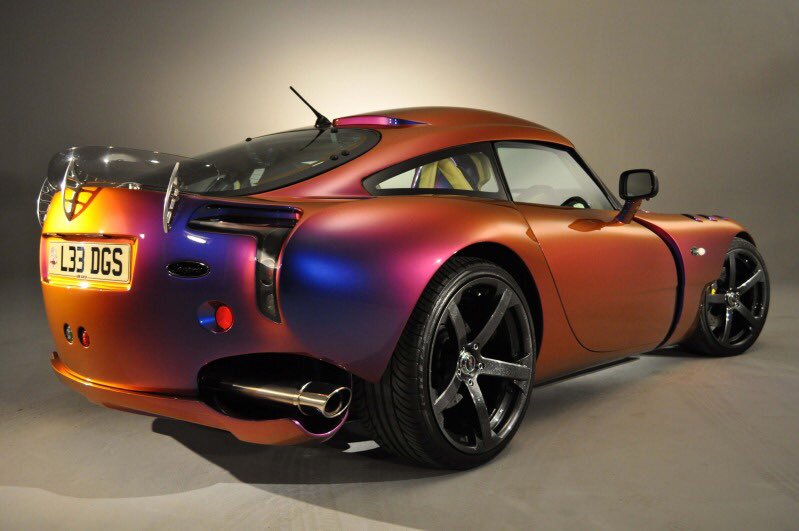
3. **TVR Tina: The Hot Hatch That Never Was**The TVR Tina represents a fascinating ‘what if’ in automotive history, remarkably predicting the hot hatch phenomenon decades early. This visionary project stemmed from a collaboration between Martin Lilley of TVR and designer Trevor Fiore. Their goal was creating agile, engaging vehicles based on Hillman Imp mechanicals. The Tina’s compact dimensions emphasized agility over brute force, aligning with dynamic, lightweight performance.
For market flexibility, TVR developed the Tina in convertible “Spider” and fixed-roof coupe configurations, both showcasing Fiore’s sophisticated touch. Powering these prototypes was an 875cc inline-4, producing an efficient 51 bhp. Despite small displacement, lightweight construction allowed 160 km/h top speeds, delivering 8.1 L/100 km fuel economy. These figures underscore its potential as an accessible, spirited performer.
Inside, the TVR Tina prioritized efficient packaging to maximize interior space, impressive for its modest external dimensions. Layouts were practical, reflecting attention to everyday usability. Simple control systems prioritized reliability and ease of use. Had production commenced, Tina could have carved out the hot hatch market years before major manufacturers recognized the opportunity, a trailblazing concept ahead of its time.
Read more about: The Gears of Time: Unearthing 14 Criminally Underrated Rides That Deserve Their Moment in the Sun

4. **Lister Storm: The V12 Sledgehammer**In the 1990s, while McLaren F1s captured headlines, Lister quietly developed its own beast: the Storm. This 7.0L V12 supercar unapologetically prioritized brute force over finesse, a distinct British take on extreme performance. Its aggressive proportions emphasized raw power, with carbon fiber bodywork over a carbon fiber chassis ensuring optimal structural integrity and minimal weight.
Functional aerodynamics were central, enhancing high-speed stability. At its heart was a massive 6,996cc V12 engine, designed to dominate. This colossal engine churned out 585-594 horsepower and 580 lb-ft of torque. Despite its 3,670-pound weight, the Storm achieved 0-60 mph in a blistering 4.1 seconds, a testament to its overwhelming power and robust engineering.
The Storm’s interior was a no-nonsense, racing-inspired cockpit, focusing the driver’s concentration on performance. Essential instrumentation provided critical data without distraction, while racing-derived seating ensured occupant security. Spartan layouts mirrored the car’s pure performance priorities. The Storm exemplified British engineering at its most excessive, proving that sheer displacement could substitute for over-engineered sophistication.
Read more about: The Gears of Time: Unearthing 14 Criminally Underrated Rides That Deserve Their Moment in the Sun

5. **Alpine M64: The French Giant-Killer**Jean Redele’s Alpine M64 embodies a philosophy where intelligence and aerodynamic efficiency triumphed over brute displacement, earning it the moniker “French giant-killer.” Only three examples were built in 1964, making it incredibly rare. Weighing a mere 1,428 pounds, the M64 achieved extraordinary performance through masterful aerodynamic development.
Its dimensions—167.3 inches long, 64.6 inches wide, 42.1 inches tall—were perfectly proportioned to minimize drag coefficients, allowing for incredibly smooth surfaces. Despite its diminutive 1.1L engine producing 115 horsepower, exceptional aerodynamic design enabled astonishing speeds of up to 168 mph. This profound demonstration proved meticulous design could yield results traditionally associated with larger engines.
The M64’s competition-focused cockpit relentlessly prioritized weight reduction. Essential instrumentation provided all necessary performance data without superfluous additions. Racing-derived seating maintained occupant security and optimal driving posture. A five-speed transmission maximized engine efficiency. These three examples stand as enduring monuments to a design philosophy where intelligence, lightness, and aerodynamics were ultimate determinants of speed and success.
Read more about: The Gears of Time: Unearthing 14 Criminally Underrated Rides That Deserve Their Moment in the Sun
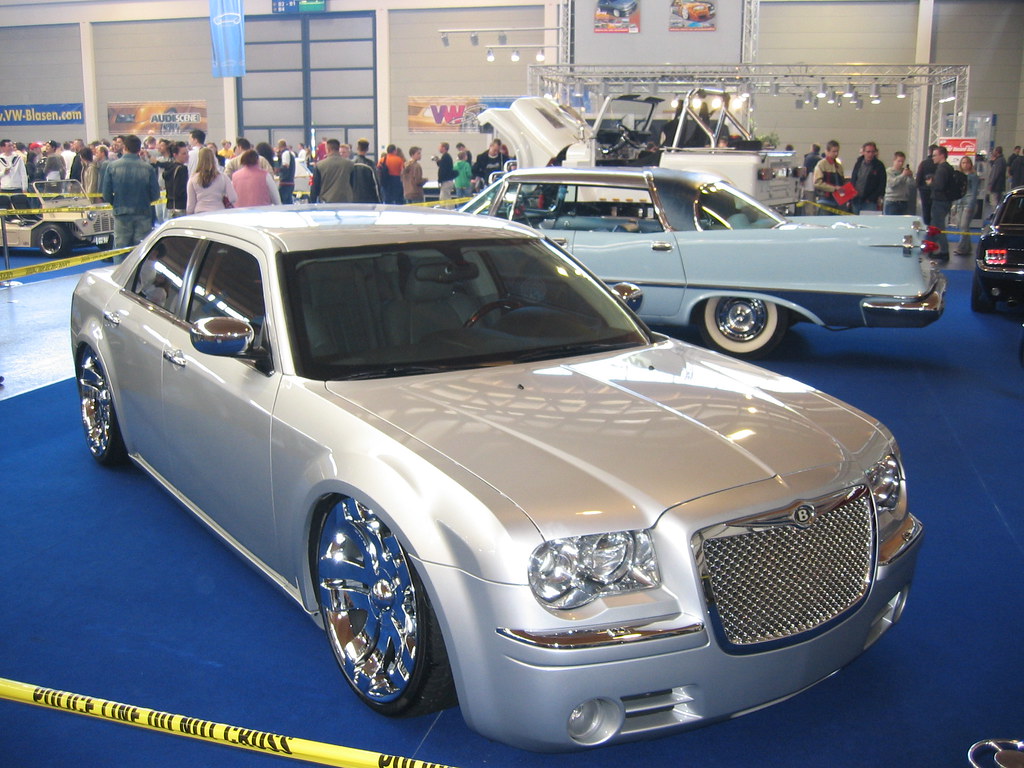
6. **Chrysler Newport (1977): The Last Stand of American Excess**The 1977 Chrysler Newport stands as a fascinating artifact, representing a cultural resistance to downsizing during America’s fuel crisis. While others shrunk, the Newport proudly maintained traditional American luxury values on the C-body platform. Its massive proportions—226.6 inches long, 79.7 inches wide—dominated landscapes, conveying undeniable presence with formal rooflines and substantial chrome.
Under the hood, the Newport offered powertrain options defying restrictive performance periods. The optional 440 cubic inch V8, despite emissions regulations, still produced a healthy 195 horsepower and 320 lb-ft of torque. This was a significant achievement for the time, providing effortless cruising capability. It was designed for comfort and presence, epitomizing an era where size equated with prestige.
Inside, spacious accommodations prioritized passenger comfort over efficiency. The interior featured traditional luxury appointments, comprehensive instrumentation, and premium materials. Seating provided genuine six-passenger capacity. As the final generation of full-size American luxury cars of its kind, the 1977 Newports hold immense historical significance, with pristine examples now attracting increasing collector attention.
Car Model Information: 1963 Chrysler Newport
Name: Chrysler Newport
Caption: 1962 Chrysler Newport hardtop coupe
Manufacturer: Chrysler (division)
Class: Full-size car
Production: 1940–1941,1949–1950,1960–1981
Layout: FR layout
Predecessor: DeSoto (automobile),Chrysler Windsor
Successor: Chrysler New Yorker,Chrysler Fifth Avenue
Categories: 1960s cars, 1970s cars, 1980s cars, All articles with unsourced statements, Articles with short description
Summary: The Newport was a name used by Chrysler for both a hardtop body designation and also for its lowest priced model between 1961 and 1981. Chrysler first used the Newport name on a 1940 show car, of which five vehicles were produced. From 1950 to 1956, the Newport name was then used to designate any Chrysler model with a hardtop body style (for example, the 1956 Chrysler “New Yorker 2 Door Newport”). In 1961, Chrysler introduced the Newport as a new, low-priced model, offering large, comfortable two- and four-door Chrysler models that were modestly priced compared with the Chrysler 300, the Chrysler New Yorker and the Imperial. For 1961, the Newport was priced below the Chrysler Windsor (which originally replaced the Chrysler Royal) in the Windsor’s final year.
Get more information about: Chrysler Newport
Buying a high-performing used car >>>
Brand: Chrysler Model: Newport
Price: $36,000 Mileage: 90,650 mi.
Read more about: The Gears of Time: Unearthing 14 Criminally Underrated Rides That Deserve Their Moment in the Sun

7. **Prince Skyline Sport: The Grandfather of Godzilla**The Prince Skyline Sport holds a pivotal, though overlooked, position as the grandfather of the legendary GT-R lineage. This sophisticated GT design resulted from a partnership between Prince Motor Company and acclaimed Italian designer Giovanni Michelotti. Michelotti’s styling elevated Japanese automotive standards, transforming the Gloria chassis into a vehicle boasting genuinely exotic proportions.
Available in coupe and convertible configurations, its ultra-limited production ensured exclusivity. Powering this elegant machine was a 1.9L inline-4 engine, producing 94 horsepower. Original pricing reached approximately $15,400 for the coupe, restricting ownership to Japan’s elite. This high price point solidified its status as a luxury performance vehicle.
The interior was lavishly appointed, justifying its premium pricing. Comprehensive instrumentation displayed serious performance intentions, while comfortable seating accommodated both touring and sporting requirements. Today, surviving Skyline Sports regularly achieve six-figure auction results, underscoring their foundational importance to GT-R heritage. With only 60 units produced, each example is exceptionally valuable.
Car Model Information: 2024 Buick Enclave Premium FWD
Name: Nissan Skyline
Caption: 2019 Nissan Skyline Hybrid GT Type SP (HV37, Japan)
Manufacturer: unbulleted list
Aka: unbulleted list
Production: 1957–present
Class: unbulleted list
Layout: unbulleted list
Related: unbulleted list
Predecessor: Prince Sedan
Categories: 1960s cars, 1970s cars, 1980s cars, 1990s cars, 2010s cars
Summary: The Nissan Skyline is a brand of automobile originally produced by the Prince Motor Company starting in 1957, and then by Nissan after the two companies merged in 1967. After the merger, the Skyline and its larger counterpart, the Nissan Gloria, were sold in Japan at dealership sales channels called Nissan Prince Shop. The Skyline was largely designed and engineered by Shinichiro Sakurai from inception, and he remained a chief influence of the car until his death in 2011. Skylines are available in either coupé, or sedan body styles, plus station wagon, crossover, convertible and pickup/sedan delivery body styles. The later models are most commonly known by their trademark round brake and tail lights. The majority of Skyline models are rear-wheel drive, with part-time all-wheel drive being available since the debut of the eighth-generation Skyline (R32). While not distributed in the United States until its importation as the Infiniti G-series in the early 2000s (the first generation Prince Skyline was imported, but sold poorly), the Skyline’s prominence (particularly for the GT-R variant) in video games, movies and magazines (including The Fast and the Furious, Initial D, Shakotan Boogie, Tokyo Xtreme Racer, Wangan Midnight, Need for Speed, Forza, Driving Emotion Type-S, Test Drive, and Gran Turismo) resulted in many such cars being brought in as grey import vehicles there, and makes up a large amount of second-hand Japanese car imports to Europe and North America. Starting with the third-generation Skyline (C10) and up to the tenth-generation Skyline (R34), the chassis, suspension and some of the engines were shared with the luxury-oriented longer wheelbase Nissan Laurel. When the former Prince factory at Musashimurayama closed in 2002 (coinciding with the discontinuation of the Laurel that same year), the Skyline used the then-new FM platform that was shared with the 350Z starting with the eleventh-generation Skyline (V35). The eleventh-generation Skyline (V35) was another major turning point for the nameplate, as it dropped some of the previous generation Skyline’s trademark characteristics such as the straight-six engine (replaced with a V6) and turbocharging (reintroduced in the thirteenth-generation/V37 model), and eventually separated the GT-R into its own line. Nissan decided to retain the Skyline for the luxury-sport market segment formerly held by the Laurel, while its platform-mate, the 350Z, revived the Z line of pure sports cars. The V35 was the first Skyline made for export to North America, being sold under Nissan’s luxury marque Infiniti as the G35 in 2002. The Skyline (V36/J50) is sold in Europe, North America, South Korea, Taiwan, and the Middle East as the Infiniti G37 and EX respectively. As of 2024, the Skyline is the only remaining sedan in Nissan’s Japanese lineup following the discontinuation of both the Fuga and Cima in 2022.
Get more information about: Nissan Skyline
Buying a high-performing used car >>>
Brand: Prince Model: Skyline Sport
Price: $29,997 Mileage: 37,001 mi.
Read more about: The Gears of Time: Unearthing 14 Criminally Underrated Rides That Deserve Their Moment in the Sun
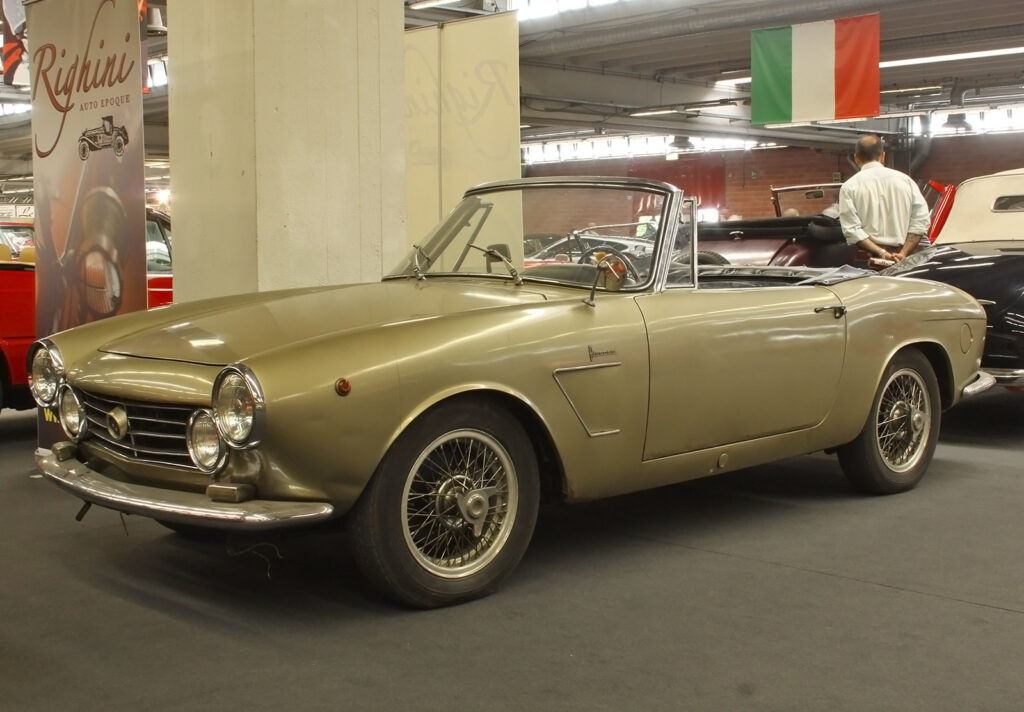
8. **Osca 1600 GT: When the Maserati Brothers Went Independent**After departing from their iconic family company, the Maserati brothers founded Osca, driven by a singular vision: uncompromised sports car development. The Osca 1600 GT stands as a magnificent embodiment of this pursuit, marrying exquisite engineering with unparalleled artisanal craftsmanship. Renowned Italian coachbuilders like Zagato, Fissore, and Touring were commissioned to sculpt bespoke bodywork over a robust tubular steel chassis, ensuring each example was a unique masterpiece, not mass-produced. This dedication to individual craftsmanship truly distinguished Osca.
At its core, the Osca 1600 GT was powered by a spirited 1,568cc twin-cam four-cylinder engine. This powerplant generated between 95 and 140 horsepower, delivering an engaging driving experience. For discerning collectors, these authentic Osca examples are recognized as significant investments, commanding average auction values of $139,142. The cockpit was racing-inspired, prioritizing driver connection with logically placed controls and comprehensive instrumentation, while its Spartan layouts underscored performance intentions.
The scarcity of the Osca 1600 GT adds to its mystique and desirability. With a mere 128 examples produced between 1960 and 1963, its limited production tells a compelling story of exclusivity. The growing market appreciation for the Maserati family’s engineering heritage, coupled with the car’s undeniable charm, solidifies its position as a highly sought-after classic. Each surviving Osca 1600 GT is a tangible piece of automotive history, a testament to a legendary family’s independent pursuit of perfection.
Car Model Information: 2024 Buick Enclave Premium FWD
Name: O.S.C.A.
Logo: OSCA badge – Flickr – exfordy.jpg
Foundation: 1947
Defunct: 1967
Fate: Ceased production
Location: San Lazzaro di Savena,Province of Bologna
Industry: Automotive
KeyPeople: Ettore Maserati,Ernesto Maserati
Products: Automobile
Categories: 24 Hours of Le Mans teams, Articles with German-language sources (de), Articles with short description, Automotive companies established in 1947, CS1 French-language sources (fr)
Summary: O.S.C.A. (Officine Specializzate Costruzione Automobili—Fratelli Maserati S.p.A.) was an Italian manufacturer of racing and sports cars established 1947 in San Lazzaro di Savena, Bologna, by the Maserati brothers, and closed down in 1967. The company name is usually written OSCA or Osca.
Get more information about: O.S.C.A.
Buying a high-performing used car >>>
Brand: Osca Model: 1600 GT
Price: $29,997 Mileage: 37,001 mi.
Read more about: The Gears of Time: Unearthing 14 Criminally Underrated Rides That Deserve Their Moment in the Sun

9. **De Tomaso Sport 5000: The Shelby-Italian Connection**The De Tomaso Sport 5000 represents a tantalizing “what if” in automotive history, born from a dynamic collaboration between American racing legend Carroll Shelby and Italian entrepreneur Alejandro De Tomaso. This visionary project aimed to create a marvel weighing a mere 1,455 pounds, achieving lightness through a revolutionary 1965 engineering approach: a Ford V8 engine positioned mid-chassis and integrated as an essential structural component. This innovative design minimized weight and maximized rigidity, pushing sports car construction boundaries.
The Sport 5000’s striking aesthetics were penned by Pete Brock. His aluminum bodywork was masterfully sculpted for optimal aerodynamic efficiency, its low-slung proportions overtly emphasizing racing intentions. Adjustable rear wings provided crucial fine-tuning, while a minimalist design prioritized function. The powerful Ford V8 promised raw American muscle channeled through Italian precision, with the racing-focused cockpit eliminating comfort features to keep driver concentration on performance.
Despite its groundbreaking engineering and design, only a single prototype of the De Tomaso Sport 5000 was ever completed, making it one of automotive history’s greatest missed opportunities. This unique machine represented a confluence of Shelby’s unparalleled racing expertise and De Tomaso’s flair for Italian engineering sophistication. Had it reached full production, the Sport 5000 could have dramatically redefined the supercar landscape, standing as a potent symbol of cross-continental automotive innovation.
Car Model Information: 2024 Buick Enclave Premium FWD
CarName: De Tomaso Sport 5000 Fantuzzi Spyder,Ghia DeTomaso,De Tomaso 70P,De Tomaso P70
Constructor: De Tomaso
Designer: Pete Brock
Team: De Tomaso
Drivers: Pierre Noblet,Franco Bernabei,Umberto Maglioli,Roberto Bussinello
Chassis: backbone chassis
FrontSuspension: Double wishbone suspension
RearSuspension: wishbone suspension
Length: 4084 mm
Abbr: on
Width: 1765 mm
Wheelbase: 2362 mm
Track: 1359 mm
EngineName: Ford Motor Company
Capacity: 289 cuin
Configuration: Overhead valve,V8 engine
EnginePosition: mid-engine
Gears: 5-speed
Type: manual transmission
Weight: 660 kg
Debut: 1966 Mugello Grand Prix
Races: 1 (3 entries)
Wins: 0
ConsChamp: 0
DriversChamp: 0
TeamsChamp: 0
Poles: 0
FastestLaps: 0
Categories: 1960s cars, Articles with short description, Automobiles with backbone chassis, De Tomaso vehicles, Rear mid-engine, rear-wheel-drive vehicles
Summary: The De Tomaso Sport 5000 (also known as the Ghia DeTomaso, the De Tomaso 70P, or the De Tomaso P70) was a short-lived sports racing car built by De Tomaso in 1965. Fitted with a 289 cu in (4,736 cc) Ford V8 engine, the Sport 5000 was initially designed to be used as a Grand Tourer; however, only one car was ever built of the planned fifty, meaning that it competed solely as a sports prototype in just one race, the 1966 World Sportscar Championship Mugello 500 km.
Get more information about: De Tomaso Sport 5000
Buying a high-performing used car >>>
Brand: De Tomaso Model: Sport 5000
Price: $29,997 Mileage: 37,001 mi.
Read more about: The Gears of Time: Unearthing 14 Criminally Underrated Rides That Deserve Their Moment in the Sun
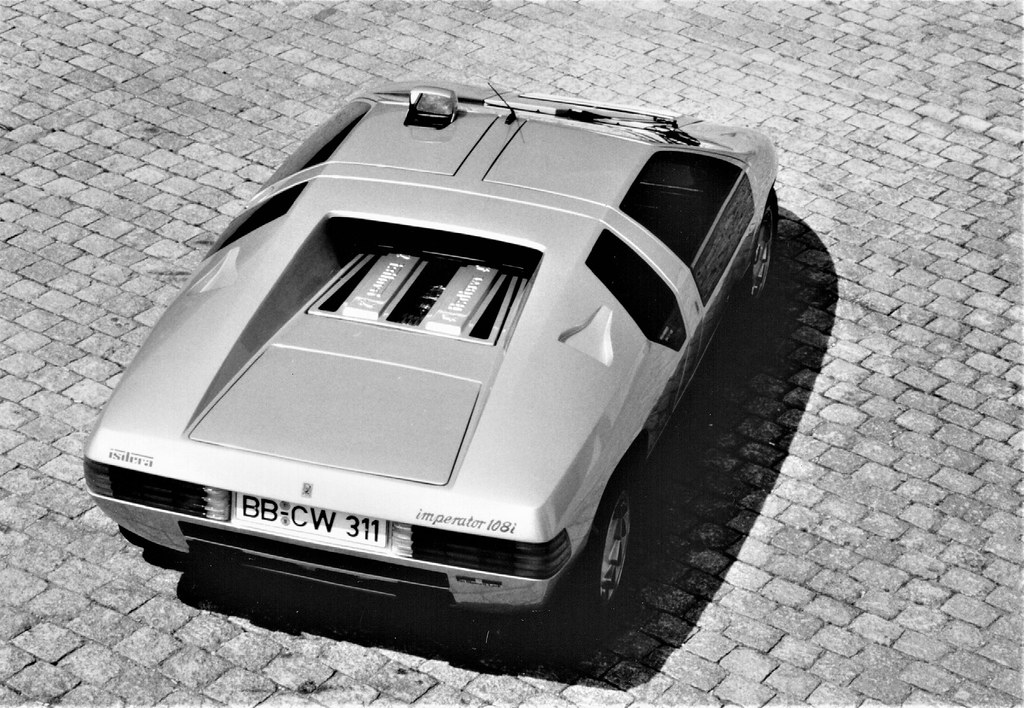
10. **Isdera Imperator 108i: Germany’s Secret Supercar**Emerging from Eberhard Schultz’s specialized vision, Isdera GmbH crafted a production supercar that remained virtually unknown outside dedicated enthusiast circles. The Isdera Imperator 108i, a truly distinctive machine, borrowed inspiration from the legendary Mercedes-Benz CW311 concept. Its design featured iconic roof-mounted periscope rear-view mirrors and dramatic gullwing doors, elements that ensured it would turn heads and spark curiosity among jaded observers.
Beneath its avant-garde exterior, the Imperator 108i utilized lightweight fiberglass bodywork constructed over robust tubular steel frames, a combination delivering an optimal strength-to-weight ratio crucial for supercar performance. The car’s aggressive aesthetics conveyed serious performance intentions. Powering this German enigma were various Mercedes-Benz V8 engines, ranging from 5.0L to 6.0L, which produced between 235 and 410 horsepower. These formidable engines were consistently paired with reliable five-speed manual transmissions, providing a direct and engaging driving experience.
The sophisticated cockpit was a testament to technological advancement and refined German engineering standards. Comprehensive instrumentation kept the driver informed with detailed vehicle monitoring, ensuring optimal control and awareness. Comfortable seating accommodated both touring and sporting requirements. The extreme rarity of the Isdera Imperator 108i guarantees exclusivity, and with rising appreciation for distinctive 1980s supercar designs, its values continue to climb, standing as a unique testament to a single individual’s vision.
Read more about: The Gears of Time: Unearthing 14 Criminally Underrated Rides That Deserve Their Moment in the Sun

11. **TVR 420 SEAC: Britain’s Kevlar Rocket Ship**From 1986 to 1988, Chris Schirle’s innovative team at TVR unleashed the 420 SEAC, a groundbreaking machine defined by its unprecedented Kevlar-Aramid composite bodywork laid over a robust tubular steel spaceframe. This advanced construction provided an exceptional combination of lightness and structural integrity, setting new standards for British sports cars. Its aggressive aesthetics were instantly recognizable, featuring a shortened front section with distinctive glass-covered indicators, widened wheel arches for Compomotive wheels, and a dominant rear spoiler proclaiming its high-performance intent.
Underneath its exotic skin, the TVR 420 SEAC housed a potent 4.2L Rover V8 engine. This formidable powerplant generated 300 horsepower, propelling the car from 0 to 60 mph in a blistering 4.7 seconds. Its top speed of 266 km/h (165 mph) was equally impressive, firmly establishing its credentials as a genuine rocket ship. The raw power delivery and distinctive V8 roar ensured an exhilarating driving experience, while the unashamedly spartan cockpit, with original analog instrumentation and minimalist layouts, fostered a pure driver connection.
Given its pioneering Kevlar body construction, buyers should verify the material, as some later examples reverted to conventional fiberglass, impacting rarity and value. Careful inspection of spaceframe integrity around suspension mounting points is crucial, and while engine rebuilds are typically expected every 60,000 miles, the investment is often justified by the car’s unique character and appreciating value. Recent auctions have shown values ranging from $28,000 to $44,000 for only 37 examples ever built, a testament to its exclusivity and significant increase from 2010 values.
Car Model Information: 2024 Buick Enclave Premium FWD
Name: TVR 420 SEAC
Manufacturer: TVR
Production: 1986–1988,37 produced
Assembly: Blackpool,England
Platform: TVR Wedges
Class: Sports car
BodyStyle: 2 – door drophead
Layout: FR layout
Engine: Rover V8 engine
Related: TVR 350i
Categories: All Wikipedia articles written in British English, All articles lacking in-text citations, All articles needing additional references, All articles with unsourced statements, Articles lacking in-text citations from November 2018
Summary: The TVR 420 SEAC is a sports car designed and built by TVR between 1986 and 1988. It is considered as the ultimate “wedge” TVR and is the top of the TVR Tasmin “wedge” family. The SEAC models can be distinguished by the large rear spoiler and the rounder nose.
The 420 SEAC was developed as a race car by TVR Competition Manager, Chris Schirle. Chris used his F1 experience to develop the Tasmin for competition use, achieving pole position in its first three outings at Oulton Park, Donington and Cadwell and seeing great success in the 1986/87 season winning 21 out of 24 races. At the end of the 1987 season, the SEAC was banned on grounds of homologation (not building the 200 cars required).
The acronym SEAC stands for Special Equipment Aramid Composite, which means that more than 20% of the body was kevlar unlike the other wedges, which used full fibreglass construction. The use of kevlar made the car more than 100 kg (220 lb) lighter without compromising the body rigidity. Due to problems with the finish and stiffness of the kevlar panels only the first 8-10 cars were manufactured with full kevlar bodies, the remainder had standard GRP bodies, except for the last 4 or 5 420 SEACs which had carbon fibre & glass fibre bodies. SEAC bodies were shorter and wider than the other wedges.
Other differences between the SEACs and the 350i/390SE/400SE wedge line include: a different chassis with a narrower transmission tunnel (1 or 2 were built with stainless steel chassis); the handbrake being changed to an umbrella type handle under the dash; a flat, 4 gauge dashboard; the exhaust system having twin pipes routed under the rear differential rather than a single pipe routed above it.
The use of kevlar and the highly tuned Rover V8 engine made the car extremely quick but had its effect on price, which was twice as much as a standard 350i. By 1988, when the even more powerful 450 SEAC replaced the 420 SEAC, 37 road going 420 SEACs had been built.
Get more information about: TVR 420 SEAC
Buying a high-performing used car >>>
Brand: TVR Model: 420 SEAC
Price: $29,997 Mileage: 37,001 mi.
Read more about: The Gears of Time: Unearthing 14 Criminally Underrated Rides That Deserve Their Moment in the Sun
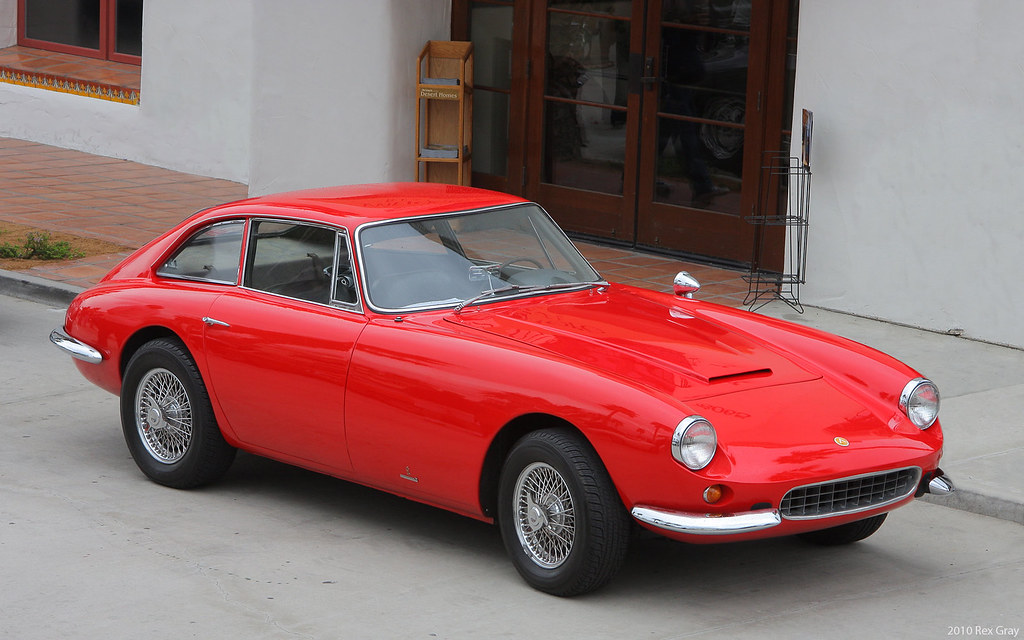
12. **Apollo 5000 GT: America’s Answer to Ferrari**The Apollo 5000 GT represents a fascinating transatlantic collaboration, born from Milt Brown’s vision to blend American mechanical reliability with exquisite Italian craftsmanship. This dream was realized through a partnership with Frank Reisner’s Intermeccanica facilities, creating a truly unique grand tourer. Legendary designer Franco Scaglione’s elegant refinements gave the Apollo timeless proportions and an air of Italian coachbuilding excellence, resulting in an exotic appearance that allowed it to compete directly with revered Ferrari alternatives.
Powering this American-Italian hybrid was a robust 4.9L Buick V8 engine, chosen for proven reliability and ample power. This engine channeled 250 horsepower through a smooth four-speed manual transmission, offering an engaging, classic driving experience. The car’s ladder-frame chassis cleverly incorporated Buick suspension components, providing a comfortable yet capable ride. The interior was lavishly appointed, justifying its premium positioning, with comprehensive instrumentation including prominent tachometers and speedometers calibrated up to 180 mph.
Despite its allure and sophisticated engineering, only 88 Apollos were produced before financial constraints ended production. This extreme rarity makes surviving examples highly coveted. Recent auction results have seen values range from $134,000 to $201,600, indicating significant appreciation potential compared to similar European exotics. The Apollo 5000 GT stands as a powerful testament to a bold vision, a blend of two automotive cultures that resulted in a truly exceptional, underrated machine.
Car Model Information: 2024 Buick Enclave Premium FWD
Name: Apollo
Caption: 1965 Apollo 5000 GT Coupe
Manufacturer: International Motor Cars
Aka: Vetta Ventura
Production: 1962 – 1964,88 produced
ModelYears: 1962 – 1965
Assembly: Oakland, California
Class: Sports car
BodyStyle: Fastback
Engine: {{convert,215,CID,L,1,abbr=on,Buick V8 engine#215
Abbr: Buick V8 engine#300
Transmission: manual transmission
Wheelbase: Convert
Url: http://www.automobile-catalog.com/make/apollo/apollo_gt/apollo_gt_convertible/1963.html
Title: 1963 Apollo GT Convertible performance data, specs & photo
Publisher: Automobile-catalog.com
Accessdate: 2011-11-20
Length: Convert
Width: Convert
Height: Convert
Weight: Convert
Designer: Franco Scaglione
Sp: us
Categories: Articles with short description, Cars of the United States, Defunct motor vehicle manufacturers of the United States, Motor vehicle manufacturers based in California, Short description is different from Wikidata
Summary: The Apollo GT is an Italian-American sports car, initially marketed from 1962 to 1964 by International Motor Cars in Oakland, California.
Engineered by Milt Brown and designed by Ron Plescia, it featured handmade Italian bodywork and chassis by Intermeccanica, with a choice between two-seater convertible or fastback styles. Power came from a 215 cu in (3.5 L) or 300 cu in (4.9 L) Buick engine mated to a 4-speed manual.
The initial company completed assembly of 42 cars before suspending production while seeking new financing. IMC allowed the sale of Intermeccanica body/chassis units to Vanguard Motors in Dallas, Texas, to produce cars under the Vetta Ventura name. These were made until 1966 as a stop-gap measure to keep body producer Intermeccanica in business until new backers were found. Other production arrangements followed, assembling cars not completed by International.
A total of 88 cars have been produced to date by all entities.
Get more information about: Apollo GT
Buying a high-performing used car >>>
Brand: Apollo Model: 5000 GT
Price: $29,997 Mileage: 37,001 mi.
Read more about: The Gears of Time: Unearthing 14 Criminally Underrated Rides That Deserve Their Moment in the Sun

13. **Trident Venturer: The British GT You Never Knew Existed**The Trident Venturer, an obscure yet captivating British GT from the late 1960s, masterfully combined a stretched Triumph TR6 chassis with the renowned reliability of a Ford Es V6 engine. This thoughtful engineering approach sidestepped common rust concerns thanks to its sophisticated fiberglass proportions. Its distinctive styling, characterized by prominent side vents and a steeply raked rear deck, conveyed a purposeful, athletic aesthetic hinting at its sporting capabilities.
Powering the Venturer was a robust 3.0L Es V6 engine, delivering a respectable 140 horsepower, channeled through a precise four-speed manual transmission. This powertrain provided a spirited driving experience, complemented by an independent suspension system and disc brakes ensuring confident handling and stopping power. The car’s engineering aimed for a blend of performance and everyday usability. The interior, with rich walnut dashboard veneers and leather-trimmed steering wheels, was surprisingly luxurious, justifying its premium pricing strategy.
With current market values ranging from $19,000 to $31,000, the Trident Venturer is increasingly attractive as a collector’s investment, especially given its rarity. The Trident Car Club has diligently tracked around 55 examples, though only an estimated 19 to 25 are currently roadworthy. This scarcity, combined with Ford parts availability, makes the Venturer a refreshingly practical proposition for collectors seeking a distinctive and engaging British classic that remains largely undiscovered.
Read more about: The Gears of Time: Unearthing 14 Criminally Underrated Rides That Deserve Their Moment in the Sun
As we conclude our journey through these often-overlooked marvels, it becomes abundantly clear that automotive greatness isn’t always defined by market hype or omnipresent advertising. The cars we’ve explored, from the bespoke craftsmanship of the Osca 1600 GT to the groundbreaking Kevlar construction of the TVR 420 SEAC and the sophisticated British charm of the Trident Venturer, each offer a unique blend of innovation, performance, and character that demands appreciation. These machines stand as powerful reminders that beneath the surface of the mainstream, a treasure trove of engineering brilliance and design audacity awaits discovery. For true enthusiasts, uncovering these hidden gems offers not just a vehicle, but a piece of history, an untold story, and an exhilarating driving experience that few mass-produced cars can match. So, next time you consider the pantheon of automotive legends, remember these unsung heroes—they represent the enduring spirit of innovation that quietly, yet profoundly, shaped the world of driving.



